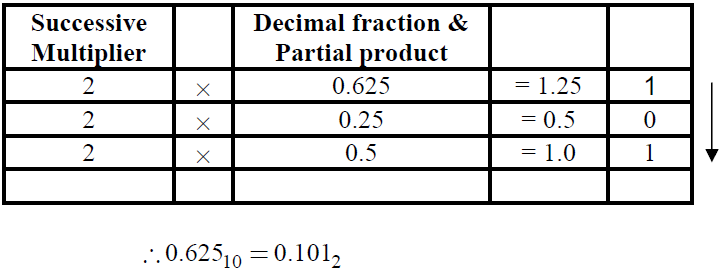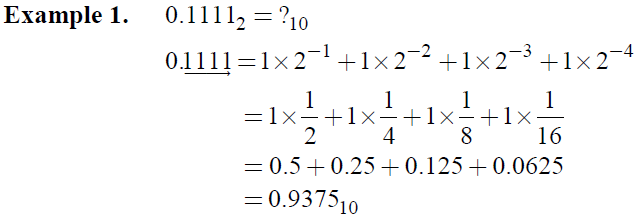Binary Number System
binary number system: A computer stores numbers, letters and characters in a coded form which is a series of string of Os and 1s. The binary number system
consists of only O and 1. The digits in binary system are called ‘bits’. A group of 4 bits is called nibble and a group of 8 bits is called a byte. A group of 16 bits is known as ‘word’ and a group of 32 bits is called a ‘double word’. This number system has base 2. Computers are designed to handle only binary numbers because computer circuits have to handle only two binary digits which simplifies the design of the circuits, reduces cost and improves reliability.
In binary system, the value of each digit is based on 2 and powers of 2.
Decimal to binary system conversion:
Step 1) Divide the number by 2, the remainder is either O or 1.
2) Place the remainder to the right of number.
3) Subsequently divide the partial quotient by 2 and again place the remainder to the right of the partial quotient.
4) Repeat the steps till we get the partial quotient O.
5) The binary number is equal to the remainders arranged so that the first remainder is the LSD and last remainder is MSD.
i.e. in order from bottom to top.
Example 1. Convert 6510 into binary.

Binary to decimal conversion : To convert binary number to its equivalent decimal number, multiply the extreme right digit by 20 , the second digit from right by 21, the third digit from right by 22 and so on till we reach the left most digit. Then add all these products. The sum is the decimal equivalent of the binary number.
Example 1. Convert 10011102 to decimal number.

Decimal to binary fraction conversion :
Step 1) Multiply the decimal fraction by 2.
2) After multiplication, if a number equal or greater than 1 is obtained then place 1 on the right of the partial product. If the product is less than 1, place 0 to the right of the partial product.
3) The partial product obtained in step 2 is multiplied by 2. The process is repeated till the partial product is 0 or the resulting binary fraction is to the required places of binary point
4) The ones and zeroes in the order obtained are equal to the binary fraction.
5) The order is from top to bottom.
Example 1 : 0.62510 = ?2

Binary to decimal fraction conversion : To convert a binary fraction to decimal fraction multiply the first bit after binary point by 2-1, the second by 2-2 , third by 2-3 and so on. Add all these products to get the decimal equivalent.
